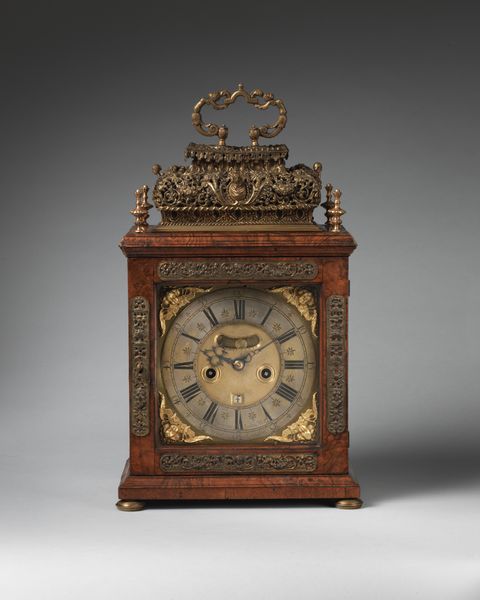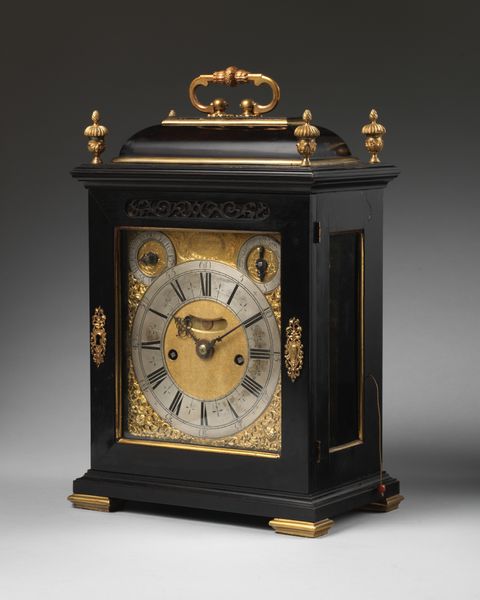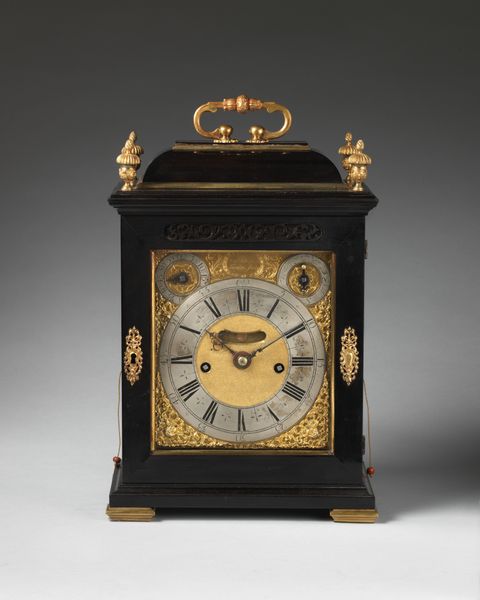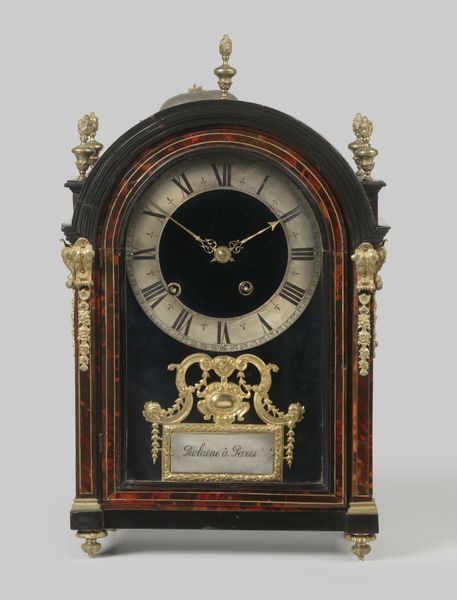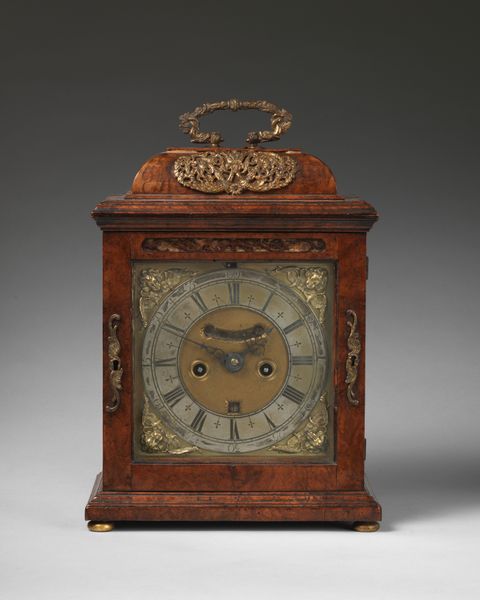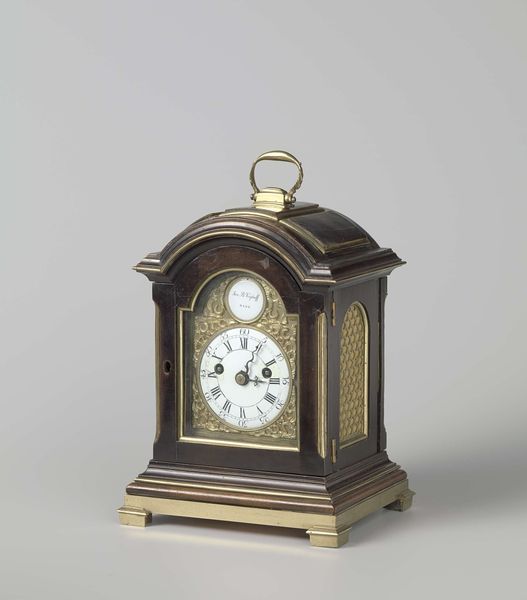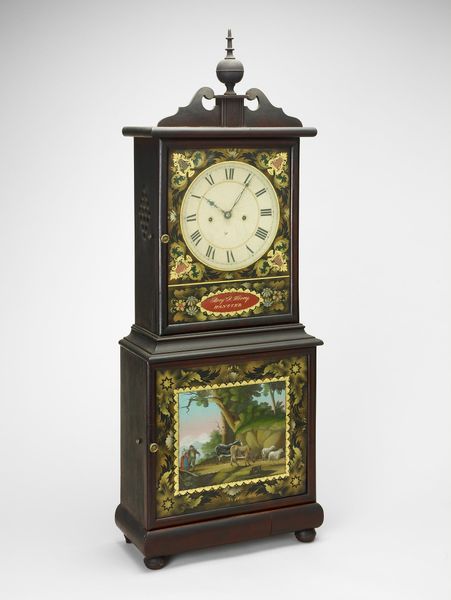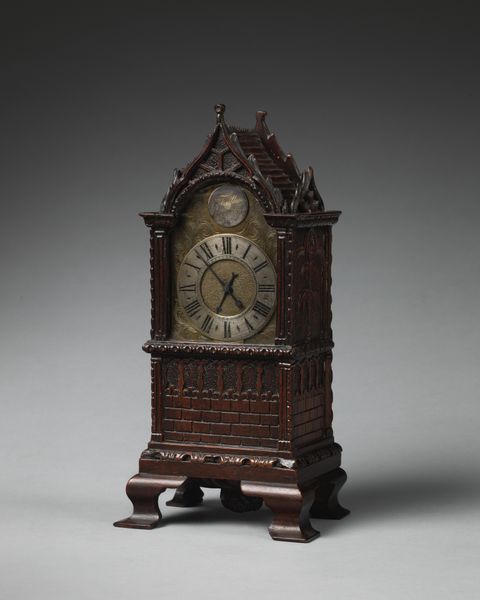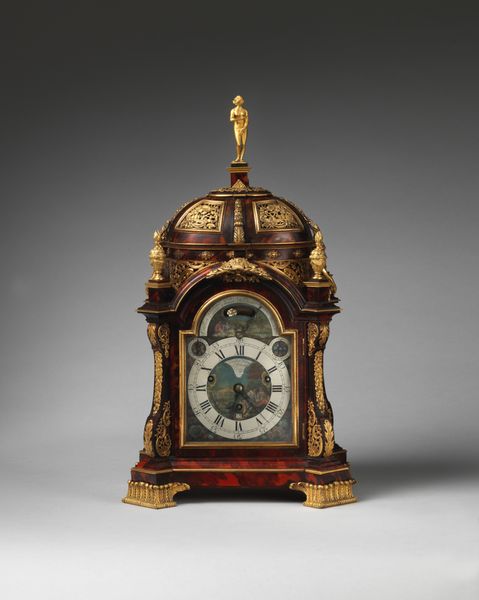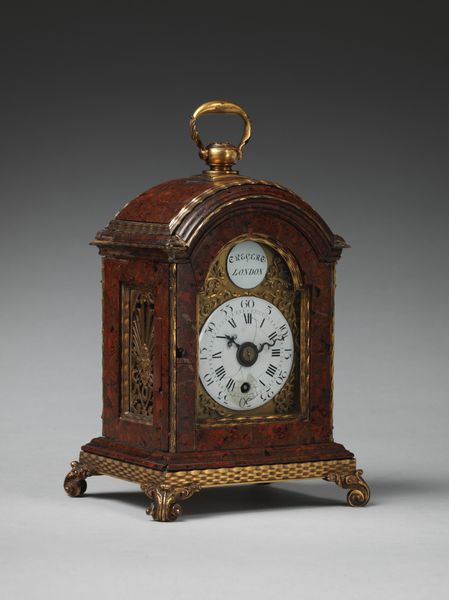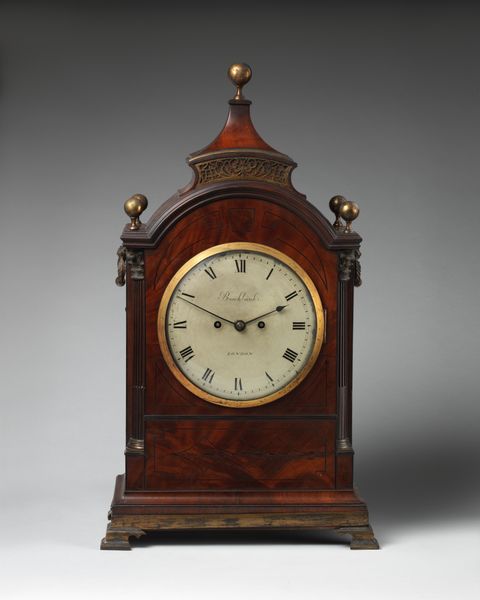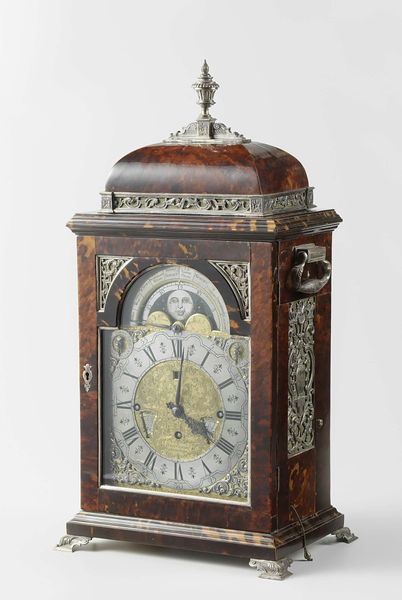
Tafelklok van hout; vierkante kast op afgeplatte bolpoten, tussen twee Toscaanse halfzuilen 1650 - 1700
0:00
0:00
metal, wood
#
antique finish
#
baroque
#
metal
#
wood
#
statue
Dimensions: height 48.3 cm, width 32.5 cm, depth 13.2 cm, length 28.7 cm, width 27.4 cm, diameter 27.5 cm, diameter 4.5 cm, length 11.9 cm, width 9.5 cm, diameter 0.9 cm
Copyright: Rijks Museum: Open Domain
Editor: This striking table clock, dating from between 1650 and 1700, is crafted from wood and metal and is attributed to Pieter (I) Visbach. The cherubic figures on top give it a whimsical feel, in contrast with the otherwise imposing seriousness of its design. What stands out to you when you look at it? Curator: For me, this piece embodies the anxieties and aspirations of the burgeoning merchant class during that era. Time, increasingly regulated and measured, became a symbol of control and productivity. How do you think the prominent display of cherubs challenges or reinforces the concept of time as a commodity? Editor: That’s a thought-provoking question! The cherubs, traditionally symbols of innocence and leisure, almost seem like they're mocking the rigid constraints of time. Maybe they represent a longing for a less structured, more carefree existence? Curator: Exactly! And consider the socio-economic implications of owning such an ornate object. It speaks to wealth, status, and the power to control not just one’s own time, but also, perhaps, the time of others through labor practices. The Baroque style, with its dramatic embellishments, amplifies this sense of opulent authority. Where do you think the artist situates the place of faith within the commercial growth of this time period? Editor: That's such an interesting idea. It's easy to overlook how intertwined religious beliefs were with daily life. Now, I'm considering whether those cherubs also functioned as a daily reminder of faith, a subtle commentary on morality. Thank you, I never would have noticed that. Curator: Absolutely! Recognizing that intersection enriches our understanding of both the artwork and the culture that created it.
Comments
No comments
Be the first to comment and join the conversation on the ultimate creative platform.
